 W
WThe sable antelope is an antelope which inhabits wooded savanna in East and Southern Africa, from the south of Kenya to South Africa, with a separate population in Angola.
 W
WThe chacma baboon, also known as the Cape baboon, is, like all other baboons, from the Old World monkey family. It is one of the largest of all monkeys. Located primarily in southern Africa, the chacma baboon has a wide variety of social behaviors, including a dominance hierarchy, collective foraging, adoption of young by females, and friendship pairings. These behaviors form parts of a complex evolutionary ecology. In general, the species is not threatened, but human population pressure has increased contact between humans and baboons. Hunting, trapping, and accidents kill or remove many baboons from the wild, thereby reducing baboon numbers and disrupting their social structure.
 W
WThe yellow baboon is a baboon in the family of Old World monkeys. The species epithet literally means "dog-head" in Greek, due to the dog-like shape of the muzzle and head. Yellow baboons have slim bodies with long arms and legs, and yellowish-brown hair. They resemble the Chacma baboon, but are somewhat smaller with a less elongated muzzle. Their hairless faces are black, framed with white sideburns. Males can grow to about 84 cm, females to about 60 cm. They have long tails which grow to be nearly as long as their bodies. The average life span of the yellow baboon in the wild is roughly 15–20 years; some may live up to 30 years.
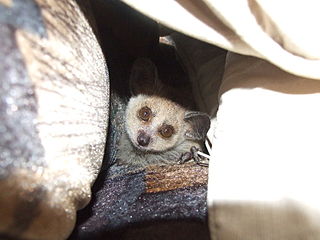 W
WGrant's bushbaby, also known as Grant's lesser bushbaby or the Mozambique lesser bushbaby, is a species of primate in the family Galagidae. It is found in Malawi, Mozambique, Tanzania, and Zimbabwe. Its natural habitat is subtropical or tropical dry forests. It is a common species and the International Union for Conservation of Nature has assessed its conservation status as being of "least concern".
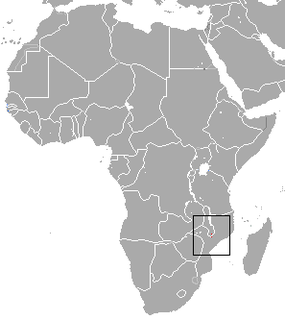 W
WThe Malawi bushbaby is a species of primate in the family Galagidae. It lives in southern Malawi and the neighboring region in Mozambique. The IUCN considers it to be part of the species Paragalago granti, Grant's bushbaby.
 W
WThe Mohol bushbaby is a species of primate in the family Galagidae which is native to mesic woodlands of the southern Afrotropics. It is physically very similar to the Senegal bushbaby, and was formerly considered to be its southern race. The two species differ markedly in their biology however, and no hybrids have been recorded in captivity.
 W
WThe Bushveld horseshoe bat is a species of bat in the family Rhinolophidae.
 W
WThe Southeast African cheetah is the nominate cheetah subspecies native to East and Southern Africa. The Southern African cheetah lives mainly in the lowland areas and deserts of the Kalahari, the savannahs of Okavango Delta, and the grasslands of the Transvaal region in South Africa. In Namibia, cheetahs are mostly found in farmlands.
 W
WThe Angola colobus, Angolan black-and-white colobus or Angolan colobus, is a primate species of Old World monkey belonging to the genus Colobus.
 W
WThe red forest duiker, Natal duiker, or Natal red duiker is a small antelope found in central to southern Africa. It is one of 22 extant species form the subfamily Cephalophinae. While the red forest duiker is very similar to the common duiker, it is smaller in size and has a distinguishing reddish coloring. Additionally, the red forest duiker favors a denser bush habitat than the common duiker. The Natal red duiker is more diurnal and less secretive than most forest duikers, so therefore it is easier for them to be observed. In 1999, red forest duikers had an estimated wild population of 42,000 individuals.
 W
WThe common eland, also known as the southern eland or eland antelope, is a savannah and plains antelope found in East and Southern Africa. It is a species of the family Bovidae and genus Taurotragus. An adult male is around 1.6 metres (5') tall at the shoulder and can weigh up to 942 kg (2,077 lb) with an average of 500–600 kg (1,100–1,300 lb), 340–445 kg (750–981 lb) for females). It is the second largest antelope in the world, being slightly smaller on average than the giant eland. It was scientifically described by Peter Simon Pallas in 1766.
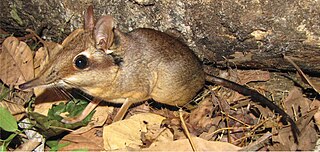 W
WThe four-toed elephant shrew or four-toed sengi is the only living species in the genus Petrodromus, which together with five other extant genera Rhynchocyon, Macroscelides, Petrosaltator, Galegeeska and Elephantulus constitutes the order Macroscelidea. This species is only found in particular regions in Africa and is smaller in size compared to its relatives. A comprehensive recording of this species is lacking.
 W
WThe brown greater galago, also known as the large-eared greater galago or thick-tailed galago, is a nocturnal primate, the largest in the family of galagos. As opposed to smaller galago species it would climb, walk or run rather than leap.
 W
WLichtenstein's hartebeest is a subspecies of the hartebeest antelope that dwells in savannahs and floodplains of Southeastern-Central Africa. It is sometimes classified as a unique species Sigmoceros lichtensteinii.
 W
WThe klipspringer is a small antelope found in eastern and southern Africa. The sole member of its genus, the klipspringer was first described by German zoologist Eberhard August Wilhelm von Zimmermann in 1783. The klipspringer is a small, sturdy antelope; it reaches 43–60 centimetres at the shoulder and weighs from 8 to 18 kilograms. The coat of the klipspringer, yellowish gray to reddish brown, acts as an efficient camouflage in its rocky habitat. Unlike most other antelopes, the klipspringer has a thick and coarse coat with hollow, brittle hairs. The horns, short and spiky, typically measure 7.5–9 cm.
 W
WThe greater kudu is a woodland antelope found throughout eastern and southern Africa. Despite occupying such widespread territory, they are sparsely populated in most areas due to declining habitat, deforestation, and poaching. The greater kudu is one of two species commonly known as kudu, the other being the lesser kudu, T. imberbis.
 W
WThe yellow golden mole is a species of mammal in the family Chrysochloridae. It is found in Mozambique, South Africa, and Zimbabwe. Its natural habitats are subtropical or tropical dry forest, subtropical or tropical moist lowland forest, dry savanna, moist savanna, arable land, pastureland, plantations, and rural gardens.
 W
W W
WThe common dwarf mongoose is a mongoose species native to Angola, northern Namibia, KwaZulu-Natal in South Africa, Zambia and East Africa. It is part of the genus Helogale and as such related to Helogale hirtula.
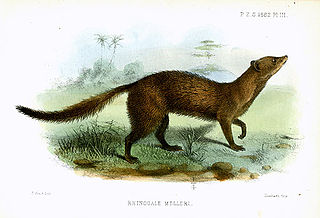 W
WMeller's mongoose is a species of mongoose found in Africa. It occurs in Democratic Republic of the Congo, Malawi, Mozambique, South Africa, Swaziland, Tanzania, Zambia and Zimbabwe. It is the only member of the genus Rhynchogale.
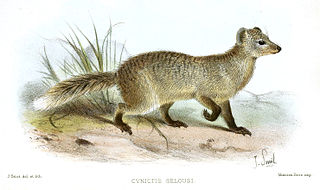 W
WSelous's mongoose is a mongoose species native to Southern Africa. It is the only member of the genus Paracynictis.
 W
WThe blue monkey or diademed monkey is a species of Old World monkey native to Central and East Africa, ranging from the upper Congo River basin east to the East African Rift and south to northern Angola and Zambia. It sometimes includes Sykes', silver, and golden monkeys as subspecies.
 W
WThe vervet monkey, or simply vervet, is an Old World monkey of the family Cercopithecidae native to Africa. The term "vervet" is also used to refer to all the members of the genus Chlorocebus. The five distinct subspecies can be found mostly throughout Southern Africa, as well as some of the eastern countries. Vervets were introduced to Florida, St. Kitts and Nevis, and Cape Verde. These mostly herbivorous monkeys have black faces and grey body hair color, ranging in body length from about 40 cm (16 in) for females, to about 50 cm (20 in) for males.
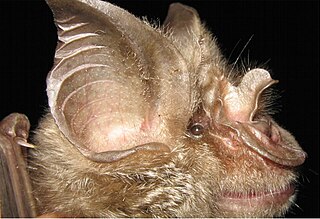 W
WThe Mozambican horseshoe bat is a species of horseshoe bat found in Africa.
 W
WThe lowland nyala or simply nyala, is a spiral-horned antelope native to southern Africa. It is a species of the family Bovidae and genus Nyala, also considered to be in the genus Tragelaphus. It was first described in 1849 by George French Angas. The body length is 135–195 cm (53–77 in), and it weighs 55–140 kg (121–309 lb). The coat is maroon or rufous brown in females and juveniles, but grows a dark brown or slate grey, often tinged with blue, in adult males. Females and young males have ten or more white stripes on their sides. Only males have horns, 60–83 cm (24–33 in) long and yellow-tipped. It exhibits the highest sexual dimorphism among the spiral-horned antelopes.
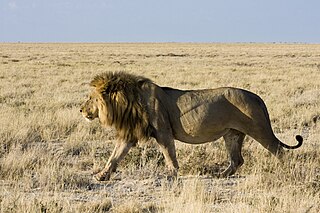 W
WPanthera leo melanochaita is a lion subspecies in Southern and East Africa. In this part of Africa, lion populations are regionally extinct in Lesotho, Djibouti and Eritrea, and threatened by loss of habitat and prey base, killing by local people in retaliation for loss of livestock, and in several countries also by trophy hunting. Since the turn of the 21st century, lion populations in intensively managed protected areas in Botswana, Namibia, South Africa and Zimbabwe have increased, but declined in East African range countries. In 2005, a Lion Conservation Strategy was developed for East and Southern Africa.
 W
WPercival's trident bat is a species of bat in the family Hipposideridae. It is monotypic within the genus Cloeotis. It is found in Botswana, Democratic Republic of the Congo, Kenya, Mozambique, South Africa, Swaziland, Tanzania, Zambia, and Zimbabwe. Its natural habitats are subtropical or tropical dry forests, dry savanna, and caves.
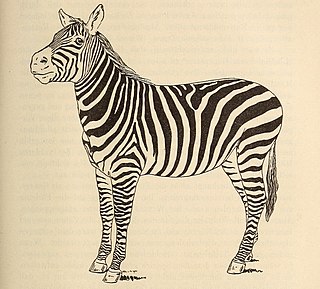 W
WSelous' zebra is a subspecies of the plains zebra distributed across southeastern Africa. It is found mostly in Mozambique. It is critically endangered.
 W
WSharpe's or northern grysbok is a small, shy, solitary antelope that is found from tropical to south-eastern Africa.
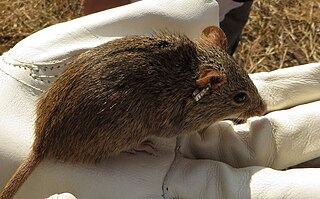 W
WThe single-striped grass mouse or single-striped lemniscomys is a species of rodent in the family Muridae.
 W
WThe sitatunga or marshbuck is a swamp-dwelling antelope found throughout central Africa, centering on the Democratic Republic of the Congo, the Republic of the Congo, Cameroon, parts of Southern Sudan, Equatorial Guinea, Burundi, Ghana, Botswana, Rwanda, Zambia, Gabon, the Central African Republic, Tanzania, Uganda and Kenya. The sitatunga is confined to swampy and marshy habitats. Here they occur in tall and dense vegetation as well as seasonal swamps, marshy clearings in forests, riparian thickets and mangrove swamps.
 W
WThe South African giraffe or Cape giraffe is a subspecies of giraffe ranging from South Africa, Namibia, Botswana, Zimbabwe, Mozambique. It has rounded or blotched spots, some with star-like extensions on a light tan background, running down to the hooves.
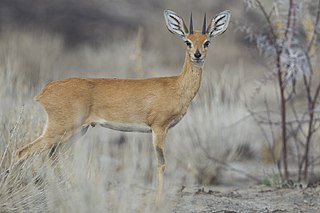 W
WThe steenbok is a common small antelope of southern and eastern Africa. It is sometimes known as the steinbuck or steinbok.
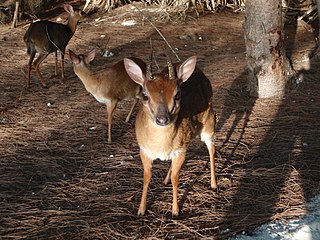 W
WThe Suni is a small antelope. It occurs in dense underbrush from central Kenya to KwaZulu-Natal in South Africa.
 W
WThe blue wildebeest, also called the common wildebeest, white-bearded wildebeest, or brindled gnu, is a large antelope and one of the two species of wildebeest. It is placed in the genus Connochaetes and family Bovidae, and has a close taxonomic relationship with the black wildebeest. The blue wildebeest is known to have five subspecies. This broad-shouldered antelope has a muscular, front-heavy appearance, with a distinctive, robust muzzle. Young blue wildebeest are born tawny brown, and begin to take on their adult coloration at the age of 2 months. The adults' hues range from a deep slate or bluish-gray to light gray or even grayish-brown. Both sexes possess a pair of large curved horns.